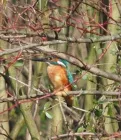This IMPEL project report focuses on nature protection within industrial installations, specifically concerning the implementation of Article 6(3) of the Habitats Directive. It examines how EU member states integrate nature protection into their permitting and inspection processes for industrial activities near Natura 2000 sites. The document discusses methodologies, legal backgrounds, and best practices related to assessing the impact of industrial emissions on these protected areas. It includes information on guidance documents, relevant court decisions, and the roles of different authorities and organizations. The report also explores specific cases, like intensive poultry or pig rearing and wind farm projects, to illustrate practical challenges and solutions. Additionally, the document addresses monitoring practices, information systems, and permit conditions related to Natura 2000 sites. Ultimately, the project aims to improve the consistent and effective implementation of the Habitats Directive across Europe.
Guidance and tools (2)

Nature Protection in Permitting and Inspection of Industrial Installations/2015

A Guidance on EU Action Plan against Wildlife Trafficking/2025
This guidance focuses on implementing the EU Action Plan against Wildlife Trafficking by analyzing effective practices across member states to create a helpful guide for enforcement authorities. The guidance details EU wildlife trade regulations, the role of intelligence analysis in tackling organized crime including wildlife trafficking, and provides case studies illustrating illegal activities and enforcement responses. It emphasizes the complexity of the illegal wildlife trade within the EU's diverse market and the importance of data collection, international cooperation, and recognizing limitations in enforcement efforts. The document also outlines available tools and provides inspection guidance to assist officers in identifying and handling wildlife trafficking cases effectively.